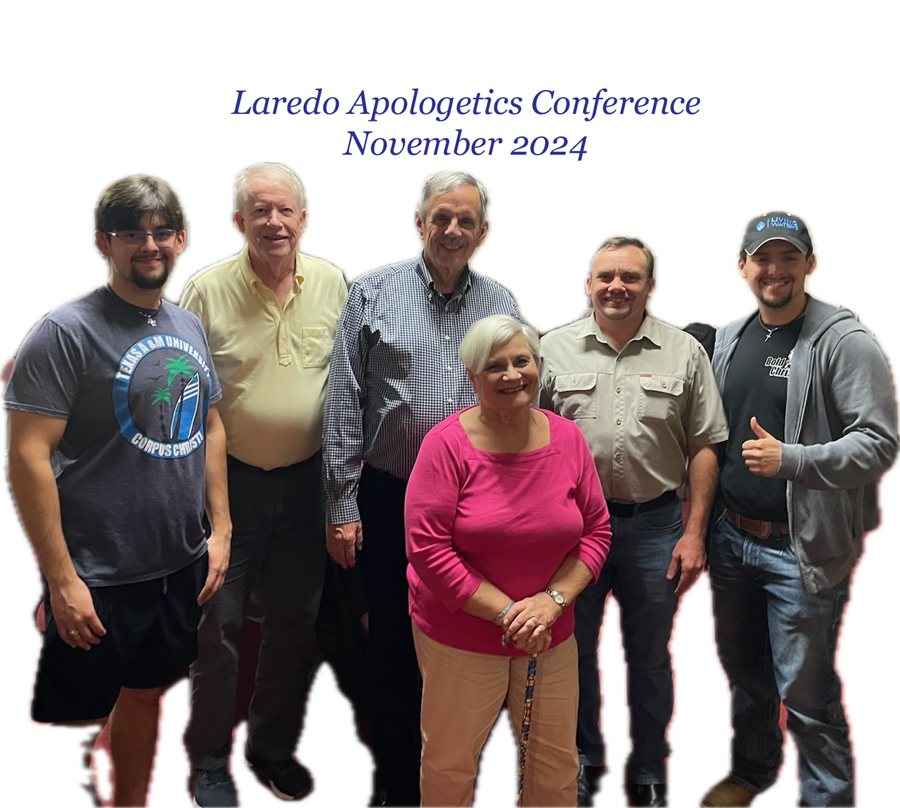When was the last time you thought about the great truth found in Christmas hymns and carols? Probe Radio producer Steven Davis focuses on the theology of five Christmas carols. The podcast features new music for each carol written by Steven’s son and Probe’s Mind Games Camp alumnus Jon Clive Davis.
Hark the Herald Angels Sing
Hark! The herald angels sing,
“Glory to the newborn King;
Peace on earth, and mercy mild,
God and sinners reconciled!”
Charles Wesley penned these words in the early 1700’s. And this hymn is filled with inspiration and insight.
The 1st line tells us who delivers this great message: the angels.
The 2nd line reveals Who is the content: the Christ child.
The 3rd line shows results of this miraculous birth: peace and mercy incarnate came to earth.
But the 4th line exclaims what has happened—that which mankind had been incapable of doing, and centuries of sacrifices could not accomplish: God and sinners were finally and fully reconciled.
Reconciliation literally means “according to change.” The situation between God and man had to be changed; both parties were at enmity with one another, and we needed to be reconciled.
“This includes you who were once far away from God. You were his enemies, separated from him by your evil thoughts and actions. Yet now he has reconciled you to himself through the death of Christ in his physical body.” (Colossians 1:21-22)
“We were God’s enemies, but he made us his friends through the death of his Son. Now that we are God’s friends, how much more will we be saved by Christ’s life!” (Romans 5:10)
On that angel-filled night, we became witnesses to the first step of this reconciliation: the Son had come in the flesh to earth! And that’s the point of the Incarnation—God became man so that He could reconcile us to Himself, and that was the miraculous, wondrous Christmas Change.
Don’t miss what the Apostle Paul and Wesley were saying about our condition: we were sinners and we were enemies. But now, because of Christ, we are reconciled.
When you consider His birth this Christmas season, may you be wondrously changed.
O Come, O Come Emmanuel
O come, O come, Emmanuel
And ransom captive Israel,
That mourns in lonely exile here
Until the Son of God appear.
Rejoice! Rejoice!
Emmanuel shall come to thee, O Israel.
Emmanuel: God with us. This was not a new concept, for Israel knew and saw on numerous occasions that God was “with” them:
“Praise the Lord who has given rest to his people Israel, just as he promised. Not one word has failed of all the wonderful promises he gave through his servant Moses. May the Lord our God be with us as he was with our ancestors; may he never leave us or abandon us.” (1 Kings 8)
“Be strong and courageous, do not fear or be dismayed because of the king of Assyria nor because of all the horde that is with him; for the one with us is greater than the one with him. With him is only an arm of flesh, but with us is the Lord our God to help us and to fight our battles.” (2 Chronicles 32)
“The LORD of hosts is with us; the God of Jacob is our stronghold.” (Psalm 46)
During the exodus God was with them as seen in a pillar of fire by night and a pillar of smoke by day. His presence was with them in the Holy of holies. And at times His presence was with them in battle.
But Emmanuel being with us is different.
John tells us in his gospel, “The Word became flesh and dwelt among us.” (John 1:14)
And Paul continues in his letter to Timothy: “Here is the great mystery of our religion: Christ came as a human. The Spirit proved that he pleased God, and he was seen by angels. Christ was preached to the nations. People in this world put their faith in him, and he was taken up to glory.” (1 Timothy 3:16)
The Son of God has appeared, and that is a reason for Israel—and us—to rejoice.
Joy to the World
Joy to the world! The Lord is come
Let earth receive her King!
Let every heart prepare Him room
And heaven and nature sing
And heaven and nature sing
And heaven, and heaven and nature sing!
I love this carol. It is indeed joyous, and is rightfully sung as such. But is the world joyous? Will Earth receive her king? Will every heart prepare Him room?
No.
And that greatly saddens me. There are those who worship other gods, and will find no joy in His coming. There are those who think Him a myth and will not receive Him. There are those who think Him irrelevant or undeserving, and will not make room for Him. For these . . . there is no joy.
Part of the reason there is no joy is our fault—the Church’s fault. Do we judge instead of love? Are we inconsistent? Do we preach legalism rather than forgiveness? And though we understand the Truth, do we wield it as a weapon rather than share it with grace?
For those who may have ended up on the receiving end of our hypocrisy, I am so sorry. But don’t let our failings get in the way of you seeing a loving heavenly Father, and His Son, dying for your sins.
Scripture tells us that “at the name of Jesus every knee will bow of those who are in heaven and on earth and under the earth, and every tongue will confess that Jesus Christ is Lord, to the glory of God the Father.” (Philippians 2:10-11) So we will kneel and confess Christ, either because we love Him and find our joy in Him, or because we have to, and we find only fear.
Listen to the music; listen to the words; and discover The One who loves you this Christmas. He came for you; and He brings you joy!
What Child Is This?
So bring him incense, gold, and myrrh,
Come, peasant, king, to own him.
The King of kings salvation brings,
Let loving hearts enthrone him.
Raise, raise a song on high,
The virgin sings her lullaby
Joy, joy for Christ is born,
The babe, the Son of Mary.
In the verse preceding this one, there’s a question asked, which has to do more with you and me, than the shepherds and wise men who are part of this story: Why lies He in such mean estate, where ox and ass are feeding? That’s a 19th century way of saying, “Why was Jesus born in a barn?” So then comes my question: “Why was the King of Kings born in a barn?” The answer comes in this last verse: Come peasant, king, to own Him.
The Apostle Paul had an opportunity to speak with the philosophers in Athens on Mars Hill, and his speech explains this invitation to all:
“As I was going through your city and looking at the things you worship, I found an altar with the words, ‘To an Unknown God.’ You worship this God, but you don’t really know him. So I want to tell you about him. This God made the world and everything in it. He is Lord of heaven and earth, and he doesn’t live in temples built by human hands. He doesn’t need help from anyone. He gives life, breath, and everything else to all people. God has done all this, so that we will look for him and reach out and find him.” (Acts 17)
Peter, after having a vision from God, said, “I most certainly understand now that God is not one to show partiality, but in every nation the man who fears Him and does what is right is welcome to Him.” (Acts 10:34)
A barn would give access to everyone; a palace—where a king should be born—would have guards and ministers and red tape and bureaucracy to negotiate; and those who would have seen and heard the angels would have never been able to see the One of Whom the Angels sang.
The angels sang the song for you. Don’t miss seeing Him.
Il Est Né Le Divin Enfant
Chorus:
He is born, the divine Christ child.
Play on the oboe and bagpipes merrily.
He is born, the divine Christ child.
Sing we all of the Savior’s birth.
Through long ages of the past,
Prophets have foretold his coming;
Through long ages of the past,
Now the time has come at last.
You probably noticed this was a French carol by the title. The above is but one of a multitude of translations, which bespeaks of its long and celebrated life in English performances.
Verse 1 talks about prophets and prophecy, and now is the time. That is a rather famous phrase in the New Testament. For He says, “At the acceptable time I listened to you, and on the day of salvation I helped you.” Behold, now is ‘the acceptable time,’ behold, now is ‘the day of salvation.’” (1 Corinthians 6)
This salvation is quite literally Jesus Christ, and we see this truth beginning in the above lyric, and concluded by the writer of Hebrews:
Long ago God spoke many times and in many ways to our ancestors through the prophets. And now in these final days, he has spoken to us through his Son. God promised everything to the Son as an inheritance, and through the Son he created the universe. The Son radiates God’s own glory and expresses the very character of God, and he sustains everything by the mighty power of his command. When he had cleansed us from our sins, he sat down in the place of honor at the right hand of the majestic God in heaven. This shows that the Son is far greater than the angels, just as the name God gave him is greater than their names.” (Hebrews 1:1-4)
Do you understand what an awesome privilege it is for you to be born in this time? No waiting for many days and many prophecies to be fulfilled. This song is a celebration: the Savior has come into the world, and now is the time. So what are you doing “Now”?
May your Christmas be filled with praise.
The music for this program was composed and performed by my son and Probe Mind Games Camp alumnus, Jon Clive Davis.
©2015 Probe Ministries

